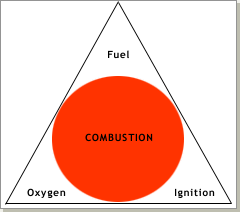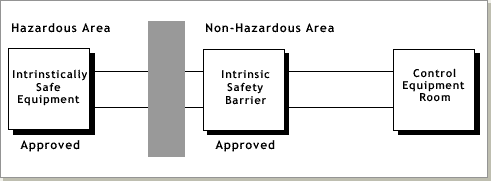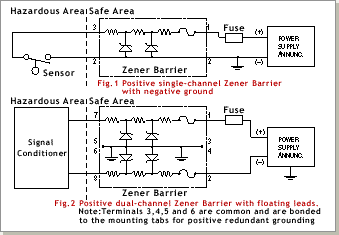Intrinsically Safe Design
We provide Hazardous waste recycling equipment with intrinsic safe design & explosion proof equipment to meet the industrial requirements with guaranteed satisfaction. In the past SRS has always supplied explosion proof rated equipment that meets and exceeds Class 1, Division 1 Groups A-F requirements. But within the past year changes that are far beneficial to the customer have been reviewed and now is implemented in SRS design for customer satisfaction. Below is SRS’s explanation on why we our changing to what we feel is a far superior direction.
Intrinsically safe equipment is defined as “equipment and wiring which is incapable of releasing sufficient electrical or thermal energy under normal or abnormal conditions to cause ignition of a specific hazardous atmospheric mixture in its most easily ignited concentration.” (ISA-RP12.6) This is achieved by limiting the amount of power available to the electrical equipment in the hazardous area to a level below that which will ignite the gases.
In order to have a fire or explosion, fuel, oxygen and a source of ignition must be present. An intrinsically safe system assumes the fuel and oxygen is present in the atmosphere, but the system is designed so the electrical energy or thermal energy of a particular instrument loop can never be great enough to cause ignition.
Traditionally, SRS’s protection from explosion in hazardous environments has been accomplished by either using EXPLOSION PROOF apparatus which can contain an explosion inside an enclosure, or PRESSURIZATION or purging which isolates the explosive gas from the electrical equipment. SRS has not changed all instruments to Intrinsically safe apparatus because it cannot replace these methods in all applications, but where possible can provide significant cost savings in installation and maintenance of the equipment in a Hazardous area. The basic design of an intrinsic safety barrier uses Zener Diodes to limit voltage, resistors to limit current and a fuse.
SRS’S APPLICATIONS
A Hazardous Area may contain flammable gasses or vapors, combustible dusts, or ignitable fibers or flyings. There are different systems used in Europe or the United States to classify the type of hazard and whether the Hazard is always present or only present in an emergency condition such as a spill or failure of venting equipment. In most cases the equipment is designed for the worst case, which would be to assume the explosive atmosphere is always present and the electrical or thermal energy is the lowest required to cause a fire or explosion.
Most applications require a signal to be sent out of or into the hazardous area. The equipment mounted in the hazardous area must first be approved for use in an intrinsically safe system. The barriers designed to protect the system must be mounted outside of the hazardous area in an area designated as Non-hazardous or Safe in which the hazard is not and will not be present.
SRS Equipment which has been designed for and is available for use in hazardous areas with intrinsically safe barriers includes:
- 4-20 mAdc Two Wire Transmitters
- RTDs
- Strain Gauges
- Pressure, Flow, & Level Switches
- I/P Converters
- Solenoid Valves
- Proximity Switches
- Infrared Temperature Sensors
- Potentiometers
- LED Indicating Lights
- Magnetic Pickup Flow meters

Most of the apparatus that is mounted in the Hazardous area are approved and certified for use in the Hazardous area with an approved barrier designed for use with that apparatus. Some simple devices like thermocouples, RTDs, LEDs and contacts can be used in the hazardous area without certification as long as it is wired in conjunction with an approved barrier.
In all cases the intrinsically safe barriers and equipment MUST be wired per an approved drawing. Capacitance and inductance of the wiring and cables must be included in the loop evaluation.
APPROVALS
Intrinsic safety equipment must have been tested and approved by an independent agency to assure its safety. The customer should specify the type of approval required for their particular application. The most common Agencies involved are as follows:
COUNTRY AGENCY
USA – FM, UL
CANADA – CSA
GREAT BRITIAN – BASEEFA
FRANCE – LCIE
GERMANY – PTB
ITALY – CESI
BELGIUM – INEX NOTE: approval by any of the above European Agencies constitutes a CENELEC approval allowing the units to be considered approved in many of the European countries.
Products to be mounted in the hazardous area can be approved either under the LOOP or ENTITY approval concept.
The LOOP concept specifies the exact part number and products that can be used in the loop. No deviation from the specified units is allowed.
The ENTITY concept specifies parameters which any approved intrinsic safety barrier must meet. This allows the user to select barriers from different approved manufacturers. Under entity approval two items may be interconnected if the following conditions are met (refer to chart below):
| HAZARDOUS | NON-HAZARDOUS (SAFE) AREA | |
| Intrinsically Safe Approved Apparatus | must be | Intrinsically Safe Barrier |
| Vmax | less than | Voc |
| Imax | less than | Isc |
| La | greater than | Li + Lw |
| Ca | greater than | Ci + Cw |
| Where: | |
| Vmax= | Maximum Open Circuit Voltage |
| Imax= | Maximum Short Circuit Voltage |
| L= | Maximum Unprotected Inductance |
| Ci= | Maximum Unprotected Capacitance |
| Vos= | Maximum Open Circuit Voltage (barrier) |
| Isc= | Maximum Short Circuit Current (barrier) |
| La= | Maximum Allowed Inductance (barrier) |
| Ca= | Maximum Allowed Capacitance (barrier) |
| Lw= | Inductance of interconnecting wiring |
| Cw= | Capacitance of interconnecting wiring |
In all cases the intrinsically safe barriers and equipment MUST be wired per an approved drawing. Capacitance and inductance of the wiring and cables must be included in the loop evaluation.

Fig. 1 Positive Single-Channel Zener Barrier With Negative Ground.Fig. 2 Positive Dual-Channel Zener Barrier With Floating Leads. Note: Terminals 3, 4, 5 and 6 are Common and are Bonded to the Mounting Tabs for Positive Redundant Grounding.







